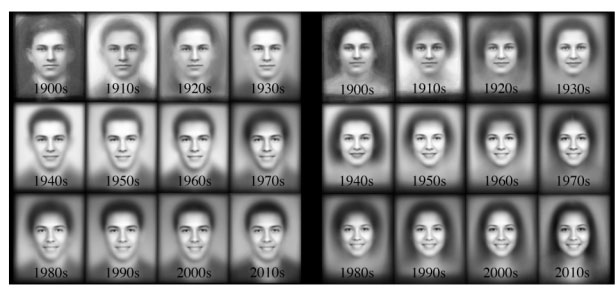Best of 2015: Data Mining Reveals How Smiling Evolved During a Century of Yearbook Photos
Data mining has changed the way we think about information. Machine-learning algorithms now routinely chomp their way through data sets of Twitter conversations, travel patterns, phone calls, and health records, to name just a few. And the insights this brings is dramatically improving our understanding of communication, travel, health, and so on.

But there is another historical data set that has been largely ignored by the data-mining community—photographs. This presents a more complex challenge.
For a start, the data set is vast, spanning 150 years since the dawn of photography. What’s more, the information it contains can be hard to distill, often because it is too complex or too mundane to describe in words.
Today, that changes thanks to the work of Shiry Ginosar at the University of California, Berkeley, and a few pals, who have pioneered a machine-vision approach to mining the data in ordinary photographs.
Keep Reading
Most Popular
Large language models can do jaw-dropping things. But nobody knows exactly why.
And that's a problem. Figuring it out is one of the biggest scientific puzzles of our time and a crucial step towards controlling more powerful future models.
How scientists traced a mysterious covid case back to six toilets
When wastewater surveillance turns into a hunt for a single infected individual, the ethics get tricky.
The problem with plug-in hybrids? Their drivers.
Plug-in hybrids are often sold as a transition to EVs, but new data from Europe shows we’re still underestimating the emissions they produce.
Stay connected
Get the latest updates from
MIT Technology Review
Discover special offers, top stories, upcoming events, and more.